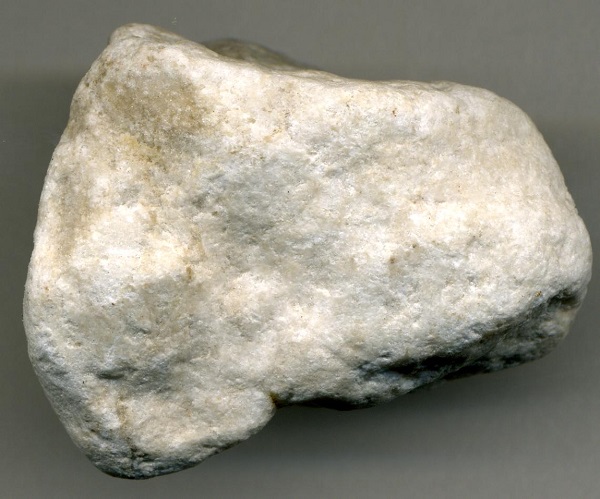Gypsum
Gypsum is a soft sulfate mineral with the chemical formula CaSO4·2H2O, also known as calcium sulfate dihydrate. It is comprised of calcium, sulphur bound to oxygen, and water. Natural gypsum is an abundant mineral in sedimentary rocks that has been mined and used for construction and and as a fertilizer since the time of Ancient Egypt.
More recently the term synthetic gypsum is used to describe gypsum that is manufactured or that forms as a by product of other processes, such as flue gas desulphurisation (FGD) gypsum which forms in coal-fired power stations.
Pure gypsum is typically white, although impurities create a wide range of different colours. Gypsum is moderately water soluble but exhibits retrograde solubility, meaning it becomes less soluble at higher temperatures. It is fire resistant and is effective at preventing the passage of sound.
In terms of production, gypsum rock is mined or quarried and then crushed and ground into a fine powder. A process of calcining heats the powder, driving off most of the chemically-combined water. The two other forms of gypsum are called selenite and satin spar.
This base gypsum is used for a wide variety of applications:
- Plaster, plasterboard, wallboard, and so on.
- Blockwork.
- Mortar.
- Blackboard chalk.
[edit] Related articles on Designing Buildings
Featured articles and news
Grenfell debarment investigations paused
By request of CPS to safeguard integrity of criminal proceedings. The community reacts.
Delivering for tenants; National Retrofit Hub
New report offers recommendations to strengthen energy efficiency standards to protect private renters.
Government consultations for the summer of 2025
A year of Labour, past and present consultations on the environment, the built environment, training and tax.
CMA competitiveness probe of major housing developers
100 million affordable housing contributions committed with further consultation published.
Homes England supports Greencore Homes
42 new build affordable sustainable homes in Oxfordshire.
Zero carbon social housing: unlocking brownfield potential
Seven ZEDpod strategies for brownfield housing success.
CIOB report; a blueprint for SDGs and the built environment
Pairing the Sustainable Development Goals with projects.
Types, tests, standards and fires relating to external cladding
Brief descriptions with an extensive list of fires for review.
Latest Build UK Building Safety Regime explainer published
Key elements in one short, now updated document.
UKGBC launch the UK Climate Resilience Roadmap
First guidance of its kind on direct climate impacts for the built environment and how it can adapt.
CLC Health, Safety and Wellbeing Strategy 2025
Launched by the Minister for Industry to look at fatalities on site, improving mental health and other issues.
One of the most impressive Victorian architects. Book review.
Common Assessment Standard now with building safety
New CAS update now includes mandatory building safety questions.
RTPI leader to become new CIOB Chief Executive Officer
Dr Victoria Hills MRTPI, FICE to take over after Caroline Gumble’s departure.
Social and affordable housing, a long term plan for delivery
The “Delivering a Decade of Renewal for Social and Affordable Housing” strategy sets out future path.
A change to adoptive architecture
Effects of global weather warming on architectural detailing, material choice and human interaction.
The proposed publicly owned and backed subsidiary of Homes England, to facilitate new homes.
How big is the problem and what can we do to mitigate the effects?
Overheating guidance and tools for building designers
A number of cool guides to help with the heat.
The UK's Modern Industrial Strategy: A 10 year plan
Previous consultation criticism, current key elements and general support with some persisting reservations.
Building Safety Regulator reforms
New roles, new staff and a new fast track service pave the way for a single construction regulator.




























Comments
Please note the requirement for ensuring that gypsum products are correctly disposed of, it should not be mixed with biodegradable waste at a standard landfill site. It is possible to recycle the material.